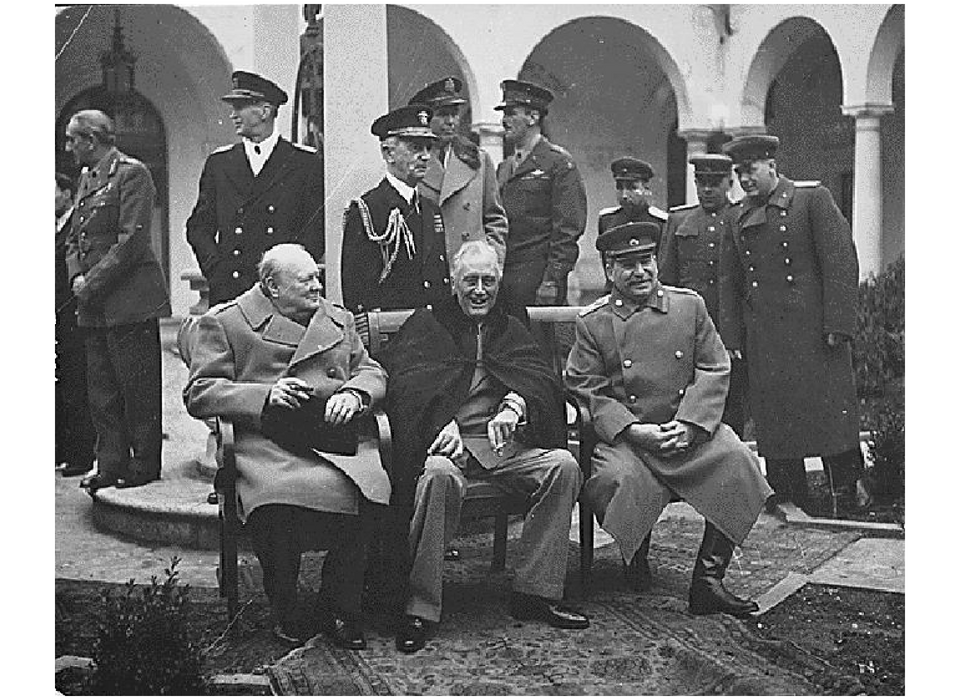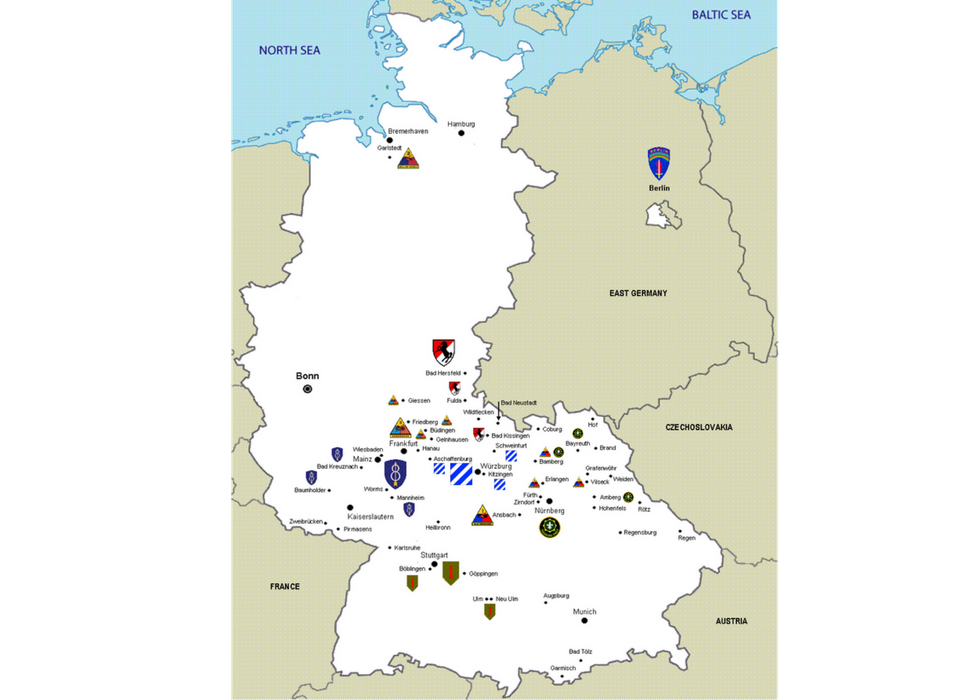Background:
What to do with Germany after the war was a pressing issue in the summer of 1944 as the memories of what happened after World War I were still fresh. The United States had adopted a policy of isolationism, which was one of the main factors that led to the rise of totalitarianism in Europe during the 1930s and to the Nazis gaining control of the government of Germany. As early as 1943 at the Tehran Conference, attended by British Prime Minister Winston Churchill, US President Franklin Roosevelt, and Soviet Premier Joseph Stalin, the issue of a possible postwar partition of Germany into Allied zones of occupation was raised. At a separate conference in Moscow in October 1944 not attended by Roosevelt, Churchill and Stalin carved up Europe in spheres of influence. When "The Big Three" met again at Yalta in February 1945, the Allied victory in Europe was all but assured. It was decided that Germany and Berlin would be split into four occupied zones, and the status of Poland was discussed.
In addition, Roosevelt agreed that Eastern European nations bordering the Soviet Union should be “friendly” to the Soviet Government which wanted to establish a buffer zone against possible future German aggression. When the Yalta agreements were made public, many Americans criticized Roosevelt for handing over Eastern Europe to the Soviet Union. There was a fear that, as the Soviets moved west at the end of the war, they would remain in Eastern Europe with no intention of leaving. To maintain the balance of power, it would be crucial for the United States to have a presence in Western Europe.
How do you think the average American responded to this July 1944 poll about keeping men in Germany after the war?
Do you think the policing of Europe after the war should be left largely to the English and Russians or should we keep as many men in Germany and other enemy countries as the English and Russians do?
______ Left to English and Russian
______ As many as English and Russians
______ Don't know
What happened:
WE STAYED!
At the conclusion of the war, Berlin was occupied by the Soviet Army and was later divided into spheres of interest between the Soviet Union, England, France and the United States. Eastern Europe, including after 1949 Eastern Germany (German Democratic Republic), was occupied by the Soviet Union while the United States occupied Western Germany (Federal Republic of Germany). The emerging problem at the conclusion of the war was the bitter rivalry between the United States and the Soviet Union. After years of fighting and allied bombing, Europe laid in total destruction. The war had produced two super powers: the United States, supporters of capitalism and democracy, and the Soviet Union supporters of Communism. As Europe laid in total destruction and communists thrived on promising a better way of life, the U.S. feared the continent was ripe for a communist takeover. Not only did the U.S. maintain a military presence in Europe, we also led the rebuilding of Europe through the Marshall Plan as a way to prevent the spread of communist ideology.
At the conclusion of World War II, the total U.S. Army strength in Europe was almost 1.9 million, a number that was brought down to 79,000 by 1949. As the Cold War heated up that very year so did the buildup of American forces in Europe. By 1952 there were over 257,000 military personnel stationed throughout Europe. At the height of the Cold War in 1962 when the Berlin Wall went up, more than 400,000 U.S. forces were stationed across 100 communities on the European continent. That force was slashed by two-thirds after the Berlin Wall fell, to an average of 109,452 troops per year during 1996 and 2000.
The occupation of Post War Germany was not to deter the German state from raising armies in the future as much as it was to contain the spread of Communism.

WWII Polls
Public opinion polls give us unique insight into America in the WWII era. Each week, historians from the Institute for the Study of War and Democracy work with the archives of the Roper Center for Public Opinion Research at Cornell University to explore what Americans believed and how they felt about events and people related to the WWII years.

Institute for the Study of War and Democracy
The Institute for the Study of War and Democracy is a community of scholars forming a national center for research, higher education, publications, and public programming, dedicated to promoting the history of World War II, the relationship between the war and America’s democratic system, and the war’s continued relevance for the world.
Dan Olmsted
Cite this article:
MLA Citation:
APA Citation:
Chicago Style Citation:






![Max Fuchs, New York City cantor, sings as Rabbi Sydney [sic] Lefkowitz, Richmond, VA, conducts the first Jewish services from Germany.](/sites/default/files/styles/max_650x650/public/2025-10/image1.jpg)



